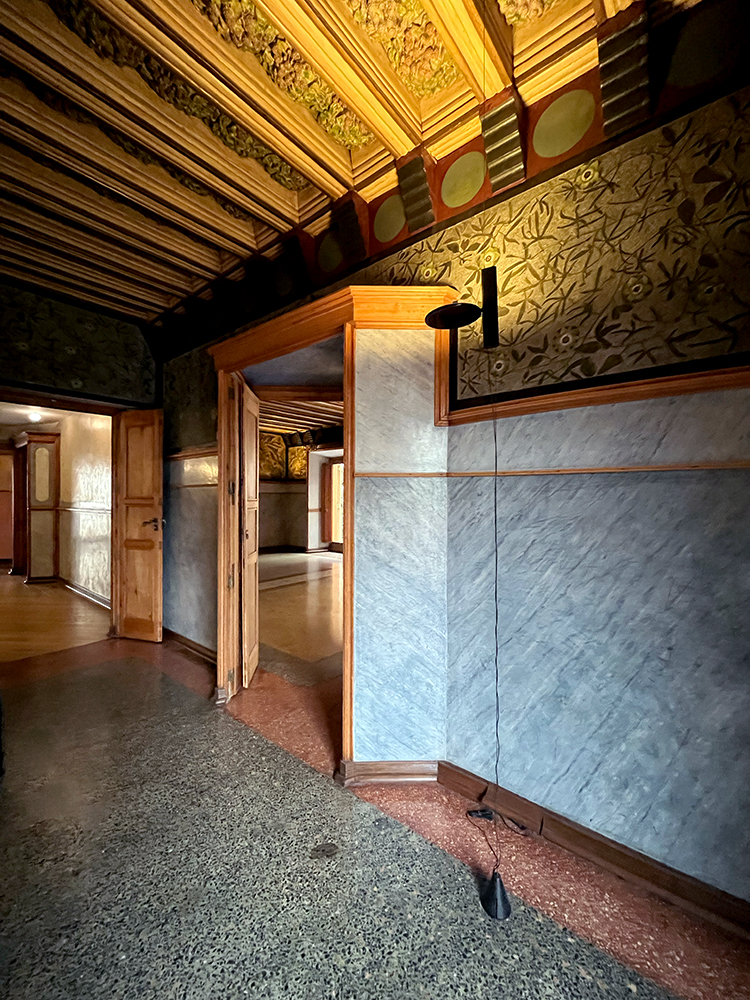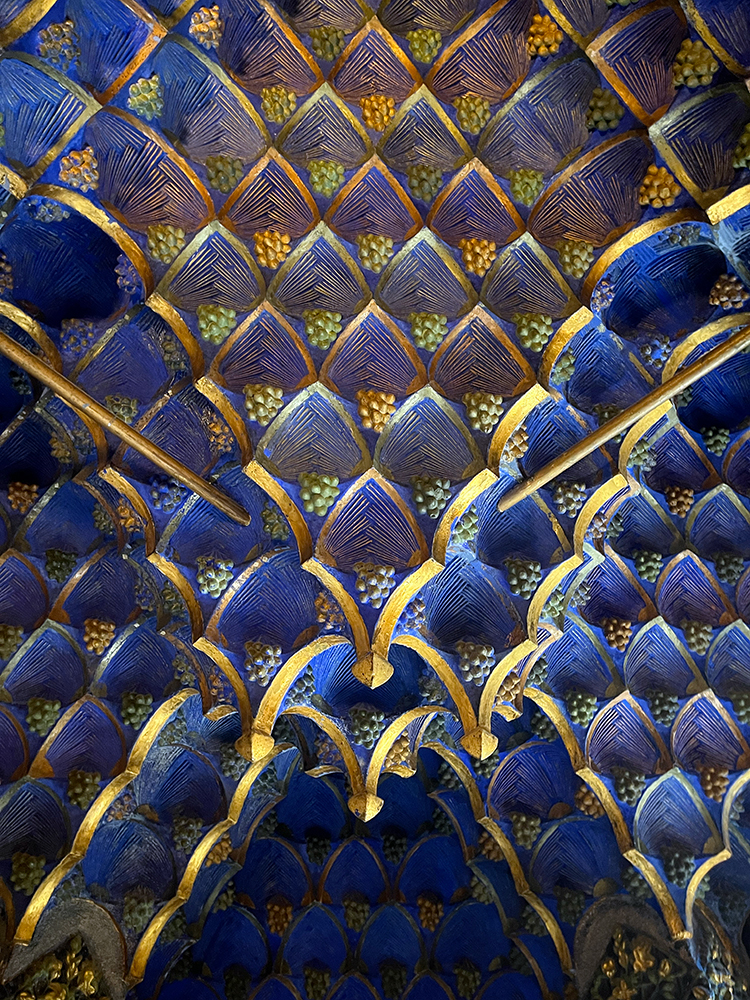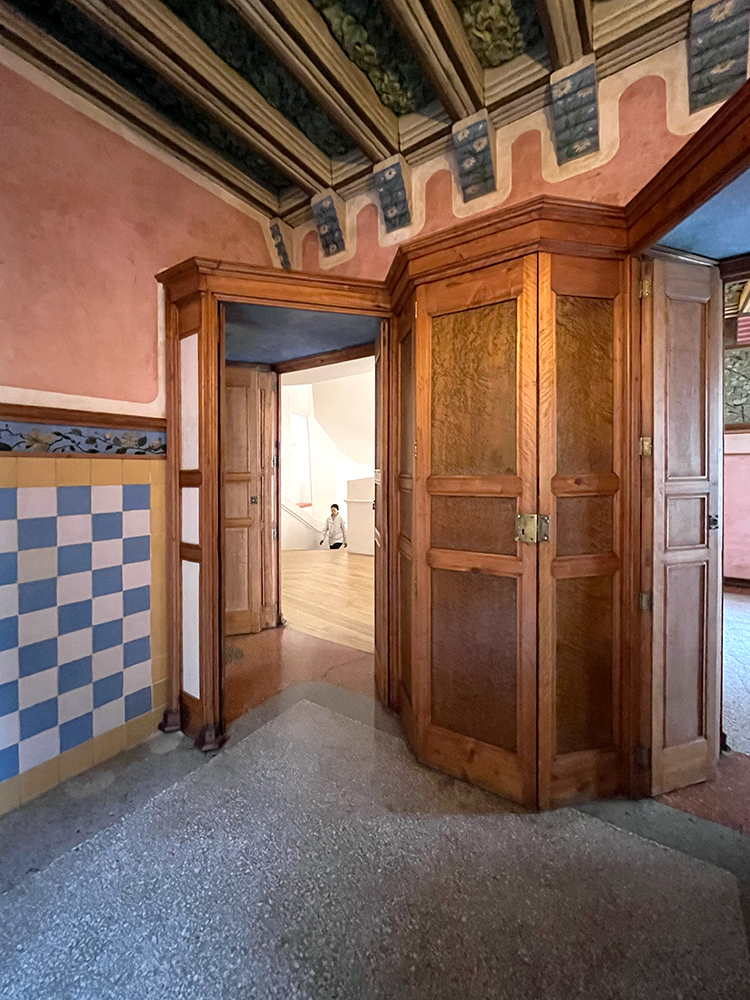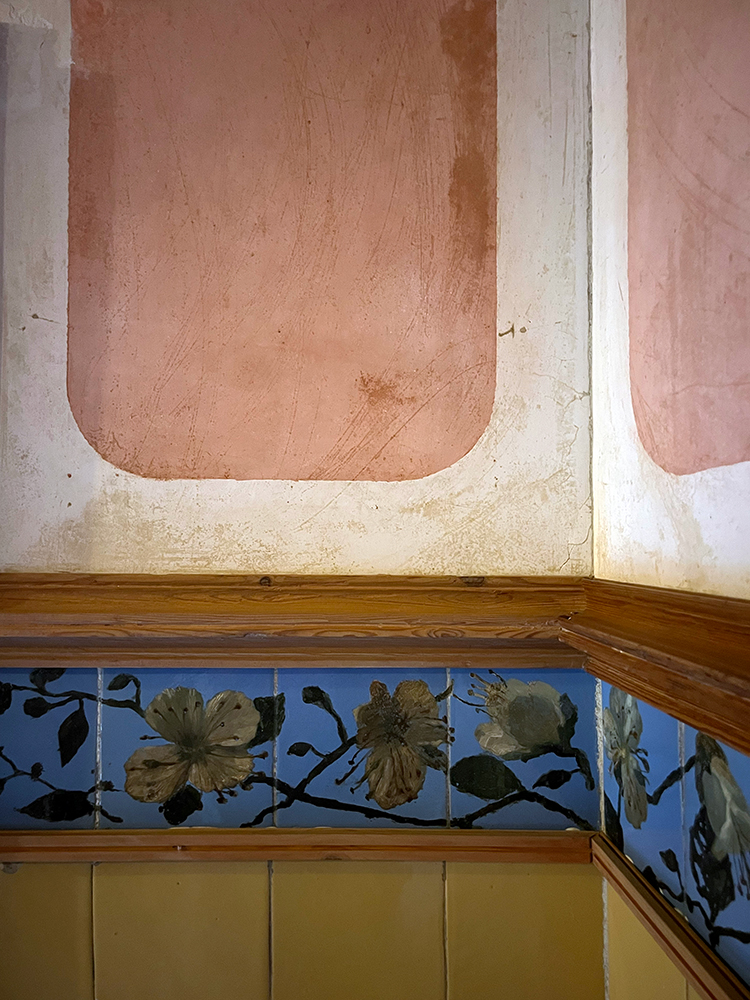Discovering Casa Vicens: Gaudí’s Visionary First Step

While his later works, like Casa Batlló and the Sagrada Família, steal most of the spotlight, Gaudí’s lesser-known first major commission is the unsung hero of his epic portfolio. We toured Casa Vicens recently: this residential project is a fascinating mix of styles, ideas, and creative energy and a must-see for any designer—or design-ethusiast—no matter your medium.
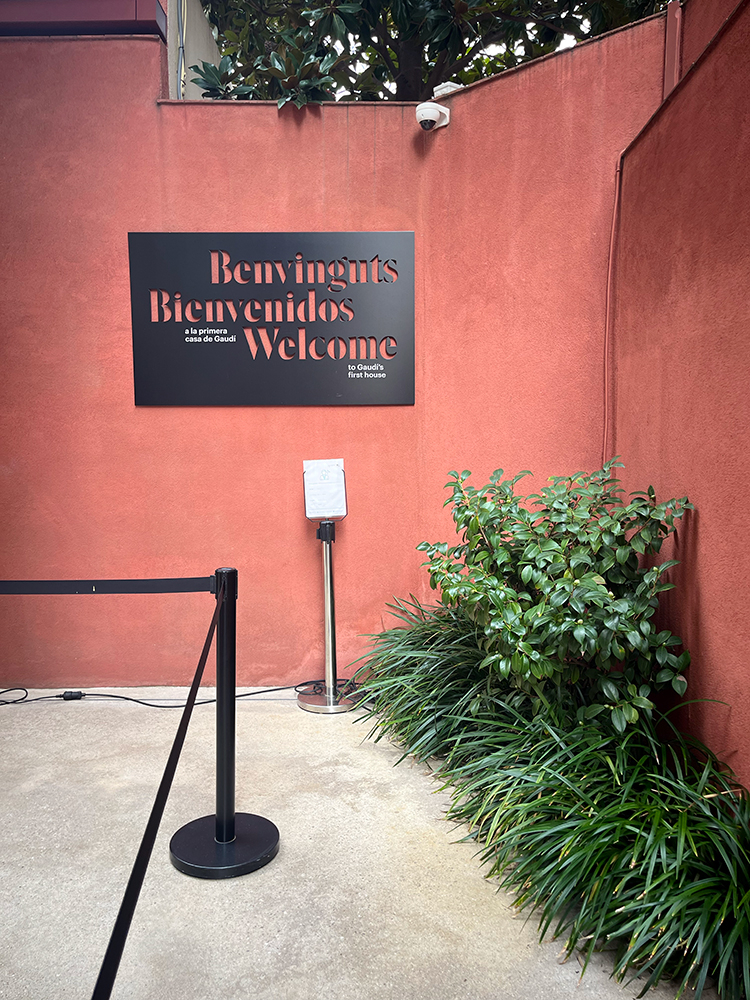

Notably more restrained (if that’s even possible) than his blockbuster projects like the Sagrada Familia, Gaudí played with space, nature, and even climate control in ways that still feel ahead of their time—a hallmark of his work. And given the design trends of the last several years—the resurgence of Art Deco and Art Nouveau, 80s postmodernism, organic shapes, checkered patterns, ‘midimalism’, biophilic design—Casa Vicens feels especially of-the-moment despite its age.
A Blend of Cultures: Moorish Meets Catalan
Designed as a summer house in the 1880s, it pulls heavily from Moorish architecture, with keyhole arches, geometric patterns, and rich textures. Bold color, intricate exposed brick, and ceramic tiles cover the façade in a way that is both playful and sophisticated. Gaudí blended these influences with local Catalan craftsmanship, and the resulting home feels like a work of art but still manages to be welcoming and livable. In today’s terms, the graphic checkered towers are reminiscent of a Minecraft creation.
Nature as Inspiration
Gaudí had a deep connection to nature, and it shows in every detail of Casa Vicens. We spotted palm leaves in the ironwork, floral motifs on the tiles, and ceilings that look like a painted canopy of trees. The house was originally designed with a large garden as its focal point, reinforcing the idea that architecture and nature should exist in harmony. This seamless integration of greenery and structure makes the home feel almost organic, as if it were grown rather than built. His ability to weave nature into his designs wasn’t just about aesthetics—it was about creating a living space that felt connected to its surroundings. And as designers, we’re always looking for ways to bring that same balance into our own work.
Smart Design: Space and Climate Control
Like any good architect, Gaudí designed the space to shape the way people move through and experience it. Forgoing traditional hallways in the floorplan, he chose to connect rooms using hexagonal vestibules, a space-saving move that feels smart for this urban dwelling while adding even more dimensionality to the rooms. The house seamlessly blends indoor and outdoor living, with covered terraces and intricate tilework that extends from the interior to the exterior, reinforcing a sense of continuity. His use of shadow and light feels intentional, creating a flow that enhances beauty and function. Even the wooden lattice shutters serve a purpose beyond decoration—they regulate airflow, keeping the house cool without modern air conditioning—an example of how great design isn’t just about looking good; it’s about creating a space that works in harmony with its environment.
Small Things, Big Impact
Everywhere we turned, we found another incredible detail. Embossed papier-mâché tiles that shift with the light, hand-carved wooden doors, custom furniture—everything was carefully considered. Gaudí didn’t believe in cutting corners, and it shows. It’s this level of detail that makes a space feel bespoke and special, and we left Casa Vicens reminded of just how powerful small design choices can be.
Fearless Creativity
Casa Vicens is a deep well of inspiration. Gaudí’s eagerness to experiment with ideas that would define his later works and his fearless creativity are something we aspire to in our own designs—both graphic and interior. Casa Vicens is proof that great design isn’t just about following trends—it’s about pushing boundaries to find unique solutions while staying true to your client’s core vision.
If you ever find yourself in Barcelona, we highly recommend a visit to this unsung masterpiece. You’ll leave with a fresh perspective—and maybe even a few new ideas of your own. And as Barcelona does so well with its cultural institutions, on your way out you can pick up a beautifully produced book (designed by Rosa Lladó of Salon de Thé) that captures the story and images of the project.



